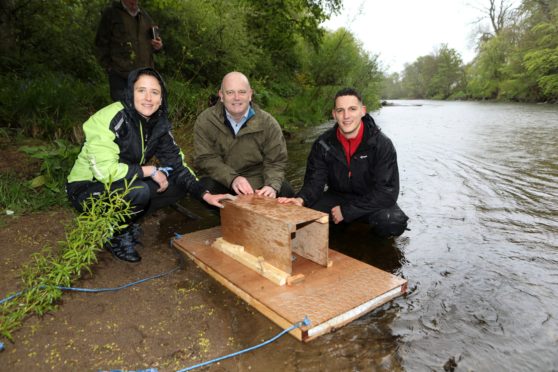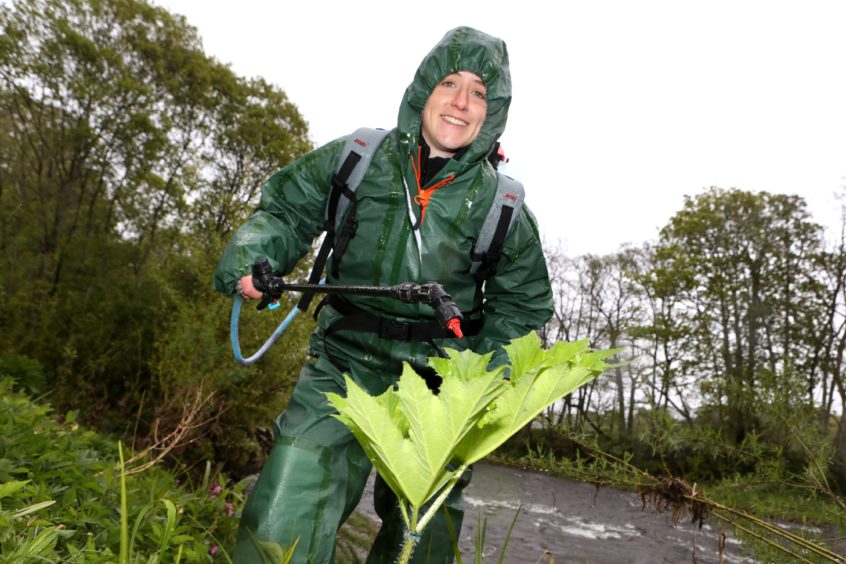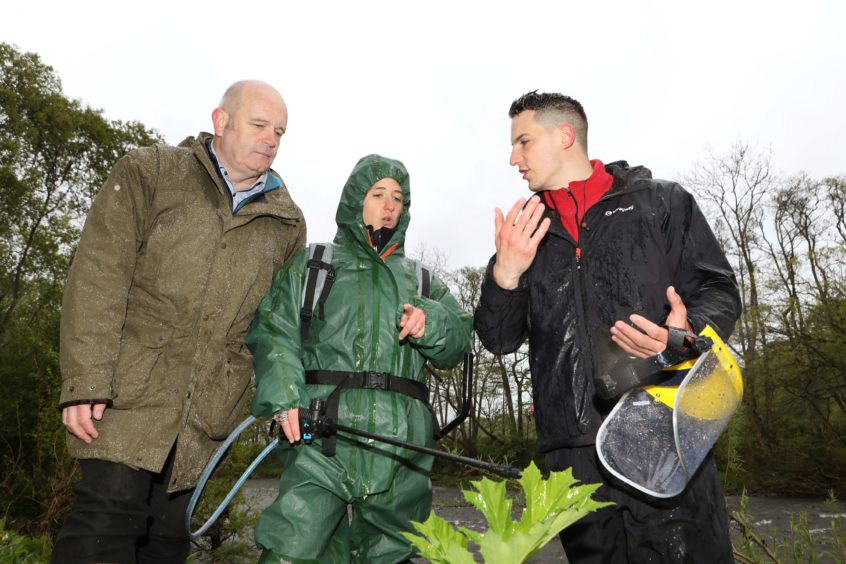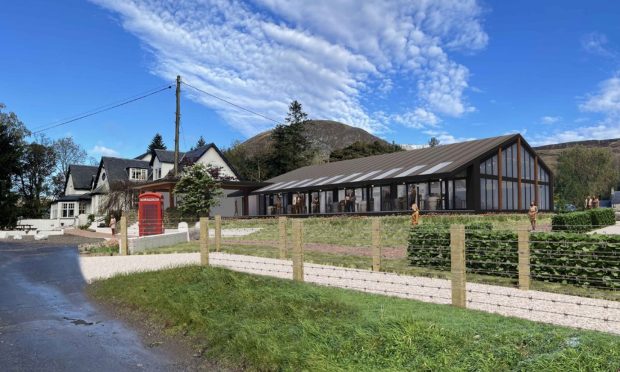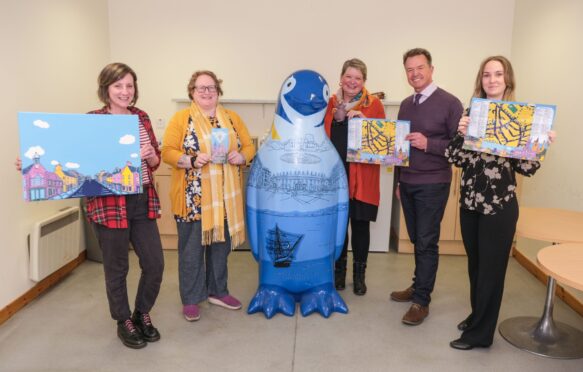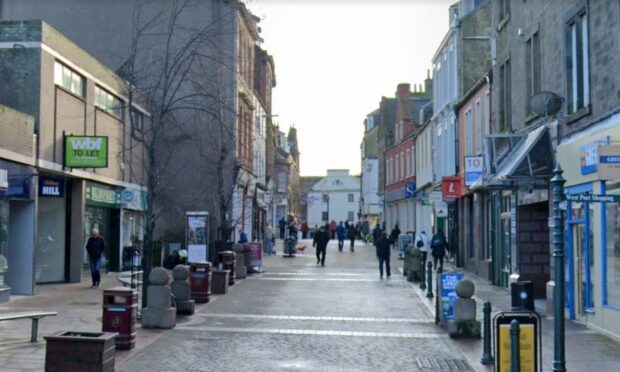A volunteer army is expanding its ranks for the frontline fight against alien invaders in Scotland’s great outdoors.
The call to arms has gone out at the start of National Invasive Species Week, where the combat zone of an Angus riverbank was the setting for work going on to tackle environmental enemies including the American mink and toxic giant hogweed.
Under the four-year Scottish Invasive Species Initiative (SISI), hours of volunteering are being ploughed into efforts to eradicate those invaders, as well as the spread of plants including Himalayan balsam, Japanese knotweed and American skunk cabbage.
Minister for rural affairs and the natural environment Mairi Gougeon joined SISI officials and volunteers on the banks of the River South Esk near Brechin in her Angus North and Mearns constituency to learn more about the issues and impacts of invasive non-native species and action is being taken to control them.
Last year 342 volunteers undertook invasive plant control as part of the project, with 736km of giant hogweed treated, while 195 volunteers helped to monitor mink rafts.
The mink prey on ground nesting birds and mammals such as water voles, leading to a catastrophic impact on that species with a near 90% decline in numbers in the 1990s.
Encouragingly, with mink under control, there are clear signs water voles are starting to recolonise areas such as some of the Angus Glens.
The sap of giant hogweed is toxic, causing sometimes severe burns and blisters. Mature plants can reach heights of up to five metres, with their large leaves prevent light from reaching native vegetation underneath.
The estimated total annual costs of invasive non-native species to Scotland is more than £250 million.
On the banks of the Finavon Castle water, Ms Gougeon donned protective gear to tackle hogweed there, and saw a mink monitoring raft being put in place.
She said: “I’ve been really impressed with Scottish Invasive Species Initiative’s approach and investment in this project at a community level – recruiting, training and equipping volunteers and working directly with community groups and landowners locally.
“Invasive species are one of the greatest threats to the beauty and variety of our nature, and it’s good news that these people and groups will be able continue the long-term work of invasive species management and control after the current four-year project ends.”
The Minister also set up a mink monitoring raft with assistance from Mark Purrmann-Charles, SISI Project Officer with the Esk Fisheries Board, and landowner Tony Andrews, which is being monitored on behalf of the project at Finavon.
The rafts detect the presence of mink by recording their tell-tale footprints on a clay pad, and once detected in the area the mink can be trapped and removed.
Mr Andrews said: “We’ve been happy to work in partnership with the Scottish Invasive Species Initiative since it began last year.
“Our river keeper Iain MacMaster was trained through the project and we’ve been working alongside local officer Mark and his volunteers to together control the invasive plants and American mink along the river here.”
Awareness events will run throughout this week to highlight the initiative and the value of volunteers, whose work in the first year of activity was equivalent to 11 full-time staff working on the project.
SISI is the largest invasive species control project in the UK, working across almost a third of Scotland.
